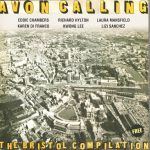…The arrival of the British Art Show (with a selection that was essentially fixated on a London/Glasgow axis of commercially signed artists) appeared to reinforce the marginalised status of Manchester-based practitioners. Not only did local artists have to accept the perennial contempt in which they were held by their local galleries, they were now to be further humiliated by the arrival of the British Art Show which was in effect a ‘yBa’ moment dressed up as a representation of ‘British Art’.
In this context, Manchester artists had more than enough reasons to feel aggrieved by the arrival of the British Art Show. However, simply complaining was not going to help. Ha! became an opportunity for some to show that they were not content with the situation in which an imported British Art Show did not reflect or include any of them. Such sentiments managed to cause a minor media skirmish. Shortly before the launch of both the British Art Show and Ha!, an exhibition curator from the Hayward was interviewed on local BBC television and sought to deny the mild accusations against the British Art Show of its exclusion of artists from the region.
When it came to pulling in visitors, a low budget exhibition such as Ha! could never compete with the institutional and financial muscle of the British Art Show. I recall playing with Die Kunst (see footnote iv) at the Ha! exhibition and, save for the loyal artistic fraternity, I don’t recall the notable presence of any ‘visitors’. Ha! did however mark a turning point in Manchester’s art scene, one that through the late 1990s no longer simply relied on or yearned for (if indeed it ever did) recognition from the city’s major art institutions.
Artist-led spaces and organisations such as The Annual Programme, Bono & Sting, and Work & Leisure International began to emerge. Embracing and competing with each other (as well as seeking and attracting established artists and recent art graduates working in the region and further afield) these initiatives functioned on comparatively paltry to non-existent budgets, but nevertheless managed to stage a wide range of exhibitions in artists’ homes, galleries, bars and public spaces. Although this activity may not have always been of the highest quality, and at times may have lacked organization and was often formed around cliques, there was, even so, a certain vibrancy to it that arguably contributed to transforming the perception of artists in the North West region. Most significantly, these initiatives did what the major institutions of Manchester frequently failed to do. That is, marry the ‘local’ with the ‘national’ and ‘international’.
Ten years on, in 2006, the British Art Show again made its way to Manchester. This summer it will arrive in Bristol for the first time since its inaugural tour during 1979-80. Although I have never lived in Bristol and do not claim to have an intimate knowledge of its arts environment, over the past fifteen years or so I have been a regular visitor. There are some interesting parallels between Manchester and Bristol relating to dynamics between the provision for local and national artistic activity. Both cities are awash with practicing artists. Both cities have galleries/organizations that are generously supported by public funding. Like Manchester of the mid 1990s, there is little evidence to suggest that any of the major arts related institutions in Bristol have that much interest in or time for the artists living on their doorstep.
Given the attention that the British Art Show commands, it is not surprising that organizations such as Arnolfini and Spike Island (along with the likes of artist-led organizations such as ROOM and Station) eagerly await its arrival. It is however intriguing to consider how and why Bristol City Museum and Art Gallery and the Royal West of England Academy have also fallen into line to welcome the British Art Show. Although the latter venue did host the exhibition in 1980, neither institution could be described as either making a generous contribution to contemporary visual arts in Bristol or, regularly supporting the contemporary visual artists of Bristol. Therefore, why have these institutions suddenly become interested in contemporary art? What message does it send out to the artists of the region, that such venues (which by and large ignore local artists and contemporary art in general) can now find the time, resources, and gallery space to provide the red carpet treatment for the British Art Show? This opportunistic and piecemeal engagement with contemporary art and artists is a bit like a fractious relationship; in which an unhappy couple put on a show on for ‘visitors’, (in this case the Hayward), and exude a certain cosy togetherness; but as soon their visitors have departed, the couple revert back to their miserable relationship, living separate lives and hardly speaking to each other. I say this because the question must be asked: will the British Art Show be the catalyst for these venues to engage with contemporary art and artists on a more consistent level? Although a venue such as Arnolfini has a less than impressive track record in staging exhibitions involving any Bristol-based artists, it does at least have a consistent programme of contemporary art. The same cannot be said of either Bristol City Museum and Art Gallery or Royal West of England Academy. The arrival of the British Art Show in Bristol also raises questions as to who are or might be the ultimate beneficiaries of such a venture. Is it the local institutions that can rub shoulders with London’s finest? Or is it the provincial artists who could, presumably, learn a thing or two from visiting a must-see exhibition of London-dominated new British art? Maybe it’s Bristol’s gallery-going audiences who are now being treated to a ‘proper’ programme of (inter) national contemporary art…
More +
Download this article's PDF file
View more information at: http://www.eddiechambers.com/archive/bristol-thisis-bristol/
